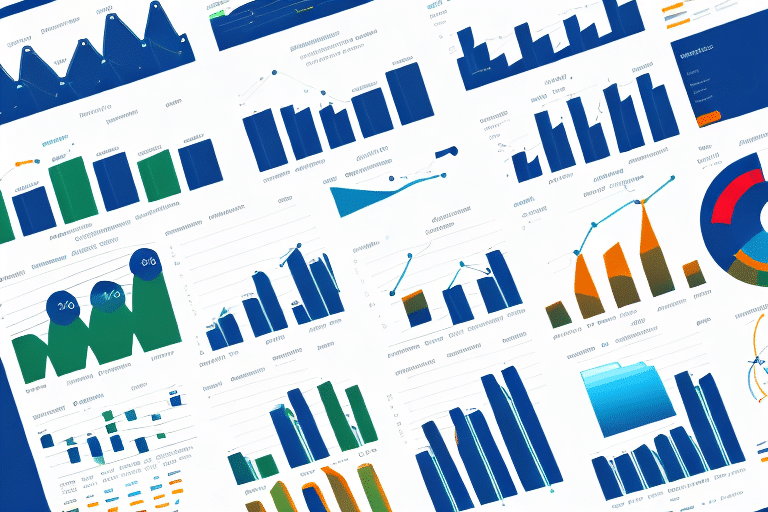Importance and Relationship of Metrics in In-house Operations
Managing in-house operations effectively is crucial for any business aiming to maintain high levels of efficiency and productivity. Tracking key performance metrics provides a comprehensive understanding of daily operations, highlighting what works well and identifying areas that require improvement.
Benefits of Tracking Metrics
Monitoring performance metrics offers numerous advantages, including:
- Informed Decision-Making: Data-driven insights enable better resource allocation and strategic planning.
- Performance Visibility: Clear metrics provide a transparent view of business operations, facilitating accountability.
- Trend Identification: Recognizing patterns over time helps in forecasting and proactive management.
According to a Gartner report, organizations that leverage data analytics are five times more likely to make faster decisions than their competitors.
Metrics and Operational Efficiency
Operational efficiency is directly influenced by the effectiveness of internal processes and employee performance. By tracking relevant metrics, businesses can identify bottlenecks and optimize workflows. This leads to:
- Increased Productivity: Streamlined processes reduce time wastage and enhance output.
- Cost Reduction: Identifying inefficiencies helps in minimizing unnecessary expenses.
- Improved Quality: Consistent monitoring ensures that product and service standards are maintained.
Research by the McKinsey & Company highlights that companies focusing on operational metrics see a 20-30% improvement in overall performance.
Key Metrics to Monitor in In-house Operations
Identifying and tracking the right metrics is essential for optimizing in-house operations. The following metrics are fundamental for most businesses:
Common Metrics
- Employee Productivity Levels: Measures the output per employee, helping to assess workforce efficiency.
- Quality Output: Evaluates the standard of products or services delivered.
- Time to Process Customer Inquiries: Tracks the responsiveness to customer requests, impacting satisfaction.
- Inventory Turnover: Assesses how quickly inventory is sold and replaced, indicating sales effectiveness.
- Workplace Incidents: Monitors accidents or safety breaches, ensuring a safe working environment.
- Equipment Downtime: Measures the time machinery is non-operational, affecting production schedules.
Customer and Employee Satisfaction
Beyond operational metrics, measuring customer satisfaction and employee satisfaction provides deeper insights into the health of your business.
- Customer Satisfaction: Can be gauged through surveys, feedback forms, and online reviews. High satisfaction levels correlate with customer loyalty and repeat business.
- Employee Satisfaction: Assessed via internal surveys and feedback mechanisms. Satisfied employees are more productive and less likely to turnover.
A study by Bureau of Labor Statistics indicates that businesses with high employee satisfaction scores see a 12% increase in productivity.
Selecting the Right Metrics for Your Business
Choosing appropriate metrics involves aligning them with your business goals and ensuring they provide actionable insights.
Aligning Metrics with Business Goals
Start by clearly defining your business objectives. Whether it's increasing sales, enhancing customer service, or improving operational efficiency, your metrics should directly support these goals.
- Specific: Clearly defined metrics that address particular aspects of your operations.
- Measurable: Quantifiable metrics that allow for tracking progress.
- Relevant: Metrics that have a direct impact on your business objectives.
- Time-bound: Metrics that are tracked over defined time periods to monitor progress.
Adhering to the SMART criteria ensures that your metrics are effective and meaningful.
Setting SMART Metrics
SMART metrics provide a structured approach to goal-setting:
- Specific: Clearly articulate what you aim to achieve.
- Measurable: Quantify the metric to track progress.
- Achievable: Ensure the metric is attainable given your resources.
- Relevant: Align with broader business objectives.
- Time-bound: Set deadlines to create a sense of urgency.
Challenges in Measuring Performance
While tracking metrics is beneficial, it comes with its own set of challenges.
Selecting Appropriate Metrics
One major challenge is determining which metrics are most relevant to your operations. It's essential to avoid information overload by focusing on metrics that provide meaningful insights rather than sheer volume.
Ensuring Objectivity
Bias can skew the interpretation of metrics. To maintain objectivity:
- Establish clear and consistent measurement criteria.
- Involve multiple stakeholders in the data evaluation process.
- Regularly audit and validate your data collection methods.
Implementing standardized procedures helps in minimizing subjective biases and ensures accurate performance assessments.
Leveraging Technology for Metric Tracking
Technology plays a pivotal role in automating the tracking and analysis of performance metrics.
Tools and Software Solutions
Various software solutions can assist in metric tracking, including:
- Enterprise Performance Management (EPM) Software: Integrates data from various sources to provide a comprehensive view of business performance.
- Business Intelligence (BI) Solutions: Offer advanced analytics and data visualization to uncover trends and insights.
- Custom Metric Tracking Software: Tailored to specific business needs, providing flexibility and customization.
For example, platforms like Tableau and Microsoft Power BI are renowned for their robust data visualization and analytics capabilities.
Benefits of Automation
Automating metric tracking offers several advantages:
- Real-time Monitoring: Access up-to-date data instantly, facilitating timely decision-making.
- Data Accuracy: Reduces human error associated with manual data entry and calculations.
- Efficiency: Saves time by automating repetitive tasks, allowing employees to focus on strategic initiatives.
However, it is crucial to supplement automated systems with human analysis to interpret data effectively and make informed decisions.
Utilizing Data for Continuous Improvement
Data analysis is integral to identifying opportunities for enhancing in-house operations.
Analyzing Trends and Patterns
By examining trends over time, businesses can pinpoint areas of strength and weakness. For instance, a consistent decline in customer inquiries response time may indicate a need for additional training or resources.
Utilize tools like Google Analytics or Tableau to visualize data patterns and derive actionable insights.
Implementing Corrective Actions
Once areas for improvement are identified, implement targeted strategies to address them. This might involve:
- Reallocating resources to high-impact areas.
- Investing in employee training programs.
- Upgrading technology infrastructure to enhance efficiency.
Continuous monitoring ensures that these corrective actions yield the desired outcomes, fostering an environment of ongoing improvement.
Best Practices and Case Studies
Implementing effective metric tracking requires adherence to best practices and learning from successful case studies.
Goal Setting Based on Metrics
Establish clear, achievable goals informed by your performance metrics. Ensure that:
- Goals are communicated transparently to all team members.
- Each employee understands their role in achieving these objectives.
- Progress towards goals is regularly reviewed and adjusted as necessary.
Recognizing and celebrating achievements boosts morale and encourages continued commitment to business objectives.
Successful Implementations
Several renowned companies have effectively utilized metric monitoring to enhance their operations:
- Toyota: Through the Toyota Production System, Toyota focuses on key performance indicators (KPIs) to maintain operational excellence.
- Amazon: Utilizes Amazon Web Services (AWS) for real-time tracking and analysis of performance metrics.
- GE: Implements the GE Work-Out process, emphasizing data analysis and continuous improvement to address performance issues.
These examples demonstrate the tangible benefits of diligent metric monitoring, including enhanced efficiency, increased profitability, and sustained operational excellence.
For more detailed insights, refer to the Harvard Business Review case studies on operational performance.






















